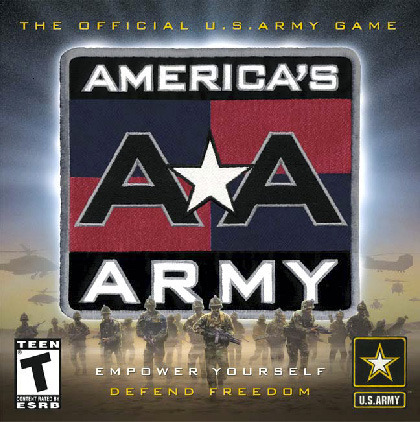'War Play': A Brilliant & Refreshing Study of the U.S. Military’s Use of Video Games

By Jim Gourley
Best Defense all-star team
Sometimes we can stare at a problem
until we lose perspective of its framework. In the contemporary debates over
drone warfare and domestic surveillance, all our focus is drawn to tangential
arguments such as confirmation of signatures and posse comitatus, distracting
us from essential fundamental considerations. How do the values of our armed
forces inform their relationship to technology? How does our sense of moral
obligation to allies and enemies extend into the virtual
world and the conduct of cyber warfare? Just how reliant is society on
the military for its security, and how reliant is the military on society for
its dominance in innovative capacity? When does the balance of those needs
necessitate the military's influence on the direction of civilian society?
These questions are somewhat esoteric, but they shape the underlying philosophy
that guides our most important decisions.
They
are also the ones that get shoved into the background of more immediate
matters. That is what makes Corey Mead's War Play such a
brilliantly refreshing work. Though its subject, the history of the military's
use of video games, seems innocuous, Mead provides a revealing historical
perspective that calls attention to its importance, benefits and consequences
all at once. Like an actual video game, War Play gives the reader an
opportunity to disconnect from "real world" concerns and enjoy
viewing things in a lighter, more entertaining context. But also like its
subject, War Play is much closer to the real thing than one might
expect, and shows how the same dilemmas apply to both Stuxnet and "America's Army."
At a
svelte 198 pages, this book wastes no time with extraneous commentary. From the
beginning, Mead launches
into the history of the military's and video game industry's influence on each
other. Interestingly, this relationship begins with the military's long-running
involvement in the American education system. He paints a picture of a large
governmental agency that created numerous materials and programs for war that
were repurposed into highly successful civilian applications. That agency in
turn often uses those products as leverage to access potential service members,
both for the purpose of recruitment and educational preparation. According to
Mead, it began when George Washington initiated a literacy program in Valley
Forge using the Bible as its textbook, and continues today as the military
introduces video simulations of firing ranges and missile launchers to schools
to help with physics-- and put military-themed materials in front of kids in
schools that are otherwise hostile to recruiters.
Perhaps
the most revelatory part of the book is the section Mead dedicates exclusively
to the video game "America's Army." From the genesis of its concept, to the
bitter arguments from military programmers that emphasizing Army values would
make the game unappealing to kids and efforts by the Pentagon to defund it, to
its achievement as the greatest recruiting tool in Army history and further
commercial success, Mead uses the story of this single game as a microcosm of
his entire narrative, and by proxy for the military's relationship with
technology as it enters the 21st century.
The
work is not without its flaws. At times Mead leaps to conclusions outside the
concern of his primary theses and without substantiating evidence. He claims
more than once that the modern video game
industry would not be as sophisticated or large as it is were it not for
the enormous amount of patronage it received from the military. It's a bit of a
reach without any consideration of other forces in the game industry, like a
certain Italian plumber from
Japan. Likewise, Mead is given to singing the praises of the modern
gamer-cum-soldier rather than scrutinizing him. He discusses the psychological
advantages a gamer has in the modern dynamic battlefield environment --
multitasking, greater ability to think quickly and filter sensory input-- only
in the context of actual hostilities. He does not question whether a
gamer-warrior is more or less adept at the more common tasks associated with
COIN.
But
these are momentary lapses. In the grand scheme of the work, Mead never forgets
that the important items are those that connect games to every other
defense-related tech endeavor. He drives this message home when he pivots on a
quotation from Orson Scott Card's masterpiece Ender's Game,
acknowledging the dilemma that arises when we make games more like war, war
more like games, and encourage children to play games all at once. Like many
other technological enterprises within the Defense Department, the history of
games' successes and failures is haphazard and demonstrates a lack of a
cohesive strategy aimed at clear objectives, making the future vulnerable and
the military its own worst enemy. This is War Play 's greatest
achievemen t-- an examination of a process unblemished by debates attached to
the product. In that regard, it may be as valuable to the present state of
controversial technologies as it is prescient of future ones.
Tom
says
Jim Gourley
is
a force of nature
.
Thomas E. Ricks's Blog
- Thomas E. Ricks's profile
- 436 followers



